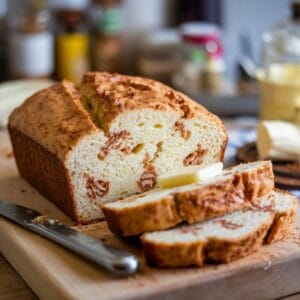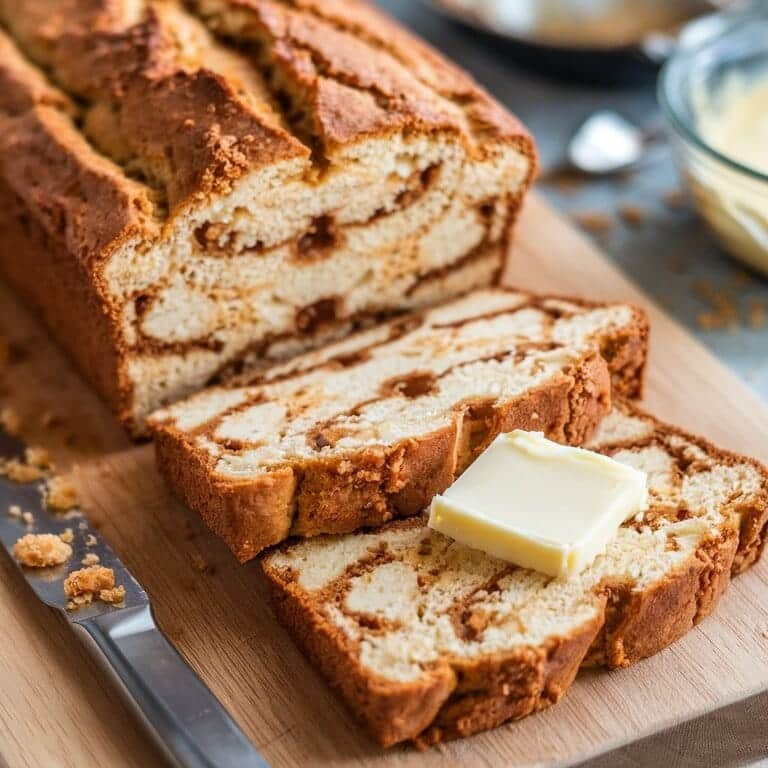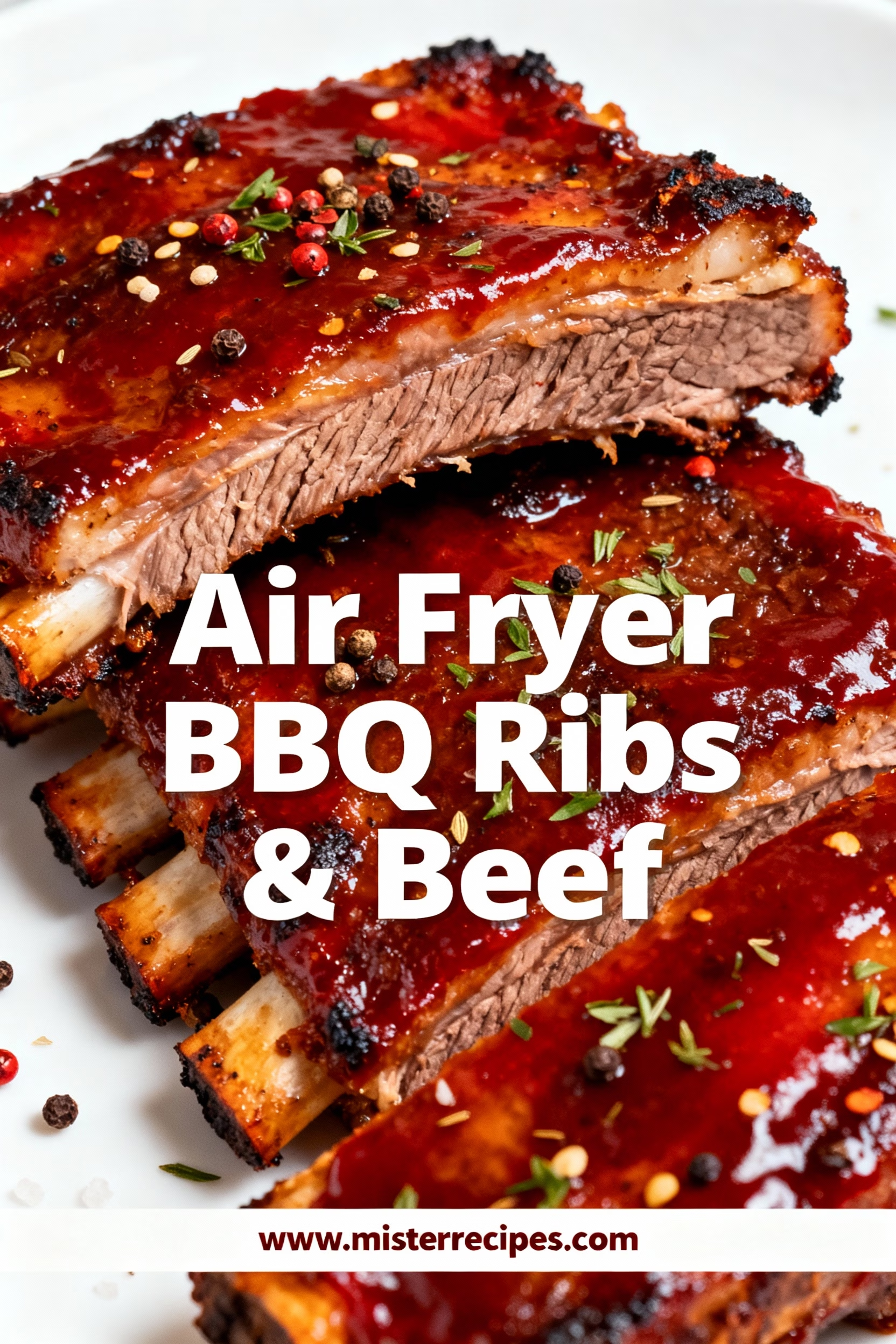A Comforting Twist with a Healthy Touch
There’s something universally comforting about the smell of freshly baked cinnamon bread filling your kitchen. It evokes memories of warmth, nostalgia, and a sense of calm. Now, imagine infusing that traditional treat with a wholesome, creamy ingredient cottage cheese. Cottage Cheese Cinnamon Bread is not just another baked good; it’s a fusion of nutritious dairy with the sweet spice of cinnamon. It’s the perfect combination of health and indulgence, a treat that balances the rich flavors of cinnamon with the mild tang and protein packed goodness of cottage cheese.
“All sorrows are less with bread.”
Miguel de Cervantes
Whether you’re looking for a comforting breakfast option, a snack to enjoy with your afternoon tea, or even a guilt-free dessert, this bread has you covered. With its moist texture, satisfying crumb, and hints of sweetness, it promises to become a household favorite.
But don’t worry if you’re not a baking pro this recipe is wonderfully accessible. From beginners to seasoned bakers, anyone can create this delicious masterpiece with a little guidance and the right ingredients. Let’s dive into this unique recipe that redefines traditional cinnamon bread with a fresh, healthier twist.
Table of Contents

Why You’ll Love This Cottage Cheese Cinnamon Bread Recipe
- Nutritious & Delicious: Cottage cheese brings protein, calcium, and a creaminess that adds a fantastic texture to the bread, making it as healthy as it is tasty. It’s a subtle addition, but one that makes a significant difference nutritionally.
- Versatility at Its Finest: This bread can be a cozy breakfast, a light afternoon snack, or even an on-the-go lunch paired with a salad. Its versatility makes it a recipe you’ll want to keep coming back to, regardless of the time of day.
- Moist, But Not Dense: Thanks to the cottage cheese and a splash of milk, this bread remains moist without being too heavy. You get a fluffy, soft crumb with a pleasant chewiness.
- Aromatic Cinnamon: The cinnamon in this recipe is truly the star, adding warmth and sweetness without the need for excessive sugar. It creates an aromatic and comforting scent that will make your kitchen feel cozy.
- Perfect for Beginner Bakers: Even if you’ve never baked a loaf of bread before, this recipe is straightforward and easy to follow. The steps are simple, and the ingredients are common, making it a great introduction to homemade bread.
How to Make Cottage Cheese Cinnamon Bread
Ingredients:
- 2 cups all-purpose flour
- 1 ½ tsp baking powder
- ½ tsp baking soda
- 1 tsp ground cinnamon
- ½ tsp salt
- ¾ cup granulated sugar
- 1 cup small-curd cottage cheese (make sure it’s well-drained)
- 2 large eggs
- ½ cup unsweetened almond milk (or regular milk)
- 1 tsp vanilla extract
- ¼ cup melted butter or neutral oil (for moisture)
- Optional: ½ cup chopped nuts (walnuts or pecans)
Instructions:
Step 1: Prepare Your Dry Ingredients
In a large bowl, whisk together the flour, baking powder, baking soda, cinnamon, and salt. Set this aside. This will create the fluffy and light texture in your bread.
Step 2: Mix the Wet Ingredients
In another medium bowl, combine the cottage cheese, sugar, eggs, milk, vanilla extract, and melted butter. Whisk until the mixture is smooth and free of lumps. This blend is where all the flavor and richness come from.
Step 3: Combine Wet and Dry
Slowly fold the dry ingredients into the wet mixture, stirring gently until everything is just combined. Be careful not to overmix; you want to keep the air in the batter to ensure a fluffy loaf.
Step 4: Add the Final Touches
If you’re using chopped nuts, fold them in at this stage. They add a lovely crunch to the bread, complementing the soft crumb and warm cinnamon.
Step 5: Bake to Perfection
Pour the batter into a greased loaf pan and bake in a preheated oven at 350°F (175°C) for 45-50 minutes, or until a toothpick inserted into the center comes out clean. The top should be golden brown and slightly puffed.
Step 6: Cool and Serve
Allow the bread to cool in the pan for 10 minutes, then transfer it to a wire rack to cool completely. Slice and enjoy! For an extra indulgent twist, serve warm with a pat of butter or a drizzle of honey.

Tips for Baking the Perfect Cottage Cheese Cinnamon Bread
- Drain Your Cottage Cheese: To avoid excess moisture in your bread, ensure your cottage cheese is well-drained. You can do this by pressing it gently with a paper towel or letting it sit in a fine mesh strainer for a few minutes.
- Don’t Overmix: Once you combine your wet and dry ingredients, stir until just combined. Overmixing can lead to a dense bread, which we want to avoid.
- Play with Add-ins: This recipe is incredibly versatile. Feel free to add raisins, dried cranberries, or even chocolate chips if you’re feeling indulgent.
- Storage Tips: Store the bread in an airtight container at room temperature for up to 3 days, or refrigerate for up to a week. It also freezes beautifully, so you can make a couple of loaves and save one for later.
- Test for Doneness: Oven temperatures can vary, so be sure to check the bread at the 40-minute mark. If the top is browning too quickly, cover it loosely with aluminum foil.
Recipe FAQ
| Question | Answer |
| Can I use low-fat cottage cheese? | Yes! Low-fat or even fat-free cottage cheese works well, though the texture might be slightly less creamy. |
| What if I don’t have almond milk? | Regular milk, oat milk, or any other milk substitute can be used in place of almond milk without changing the flavor drastically. |
| Can I make this bread gluten-free? | Absolutely. Substitute the all-purpose flour with a gluten-free baking mix, but make sure it includes a binder like xanthan gum for proper texture. |
| How do I know when the bread is done? | Insert a toothpick into the center. If it comes out clean or with a few crumbs, it’s ready. If it’s wet, give it a few more minutes. |
| Can I use a sugar substitute? | Yes, you can use stevia or another sugar substitute, but be sure to check the conversion rates, as they vary by product. |
If you are pancake fan you need to see this Cottage Cheese Protein Pancakes recipe!
People Also Ask
1. Why do you use cottage cheese in baking?
Cottage cheese is a versatile ingredient that serves several purposes in baking:
- Adds moisture: Cottage cheese keeps baked goods soft and prevents them from drying out.
- Enhances texture: It provides a creamy and tender texture to bread, muffins, and other baked goods.
- Boosts nutrition: High in protein and low in fat, cottage cheese increases the nutritional value of your baked items.
- Substitutes for higher-fat ingredients: It can replace sour cream, cream cheese, or butter, making recipes lighter and healthier.
- Mild flavor: Cottage cheese blends well with other ingredients without overpowering the dish. Using cottage cheese in baking is an excellent way to improve the texture and nutritional profile of your recipes.
2. Is cottage cheese bread low in calories?
Yes, cottage cheese bread is generally low in calories compared to traditional bread, especially if made with healthy ingredients. Here’s why:
- Lower fat content: Cottage cheese has less fat than butter or oil, which are common in bread recipes.
- High protein: The protein in cottage cheese helps to keep you full without adding many calories.
- Customizable ingredients: You can use whole-grain flour, natural sweeteners, or other low-calorie options to further reduce the calorie count. The exact calorie count will depend on the recipe, but cottage cheese bread is typically a healthier alternative to standard breads.
3. How to tell if cinnamon bread is done?
You can tell if cinnamon bread is done by checking:
- Internal temperature: Use a digital thermometer. The bread is done when the internal temperature reaches 190°F (88°C).
- Visual cues: The bread should have a golden-brown crust.
- Tapping sound: Gently tap the bottom of the loaf. If it sounds hollow, it’s done.
- Texture test: Insert a toothpick into the center of the bread. If it comes out clean or with a few crumbs, the bread is ready. Avoid overbaking to prevent a dry loaf.
4. How to make dry cottage cheese from regular cottage cheese?
Dry cottage cheese, also known as farmer’s cheese, can be made by removing excess moisture from regular cottage cheese:
- Strain the cottage cheese: Place the cottage cheese in a fine mesh sieve or cheesecloth.
- Drain the liquid: Press gently with a spoon or let it sit in the sieve over a bowl for several hours in the refrigerator.
- Blot with paper towels: Pat the strained cheese with paper towels to remove any remaining moisture. This process yields dry cottage cheese, which is firmer and less creamy than regular cottage cheese.
5. Does cottage cheese melt when you bake it?
Cottage cheese does not melt like other cheeses such as mozzarella or cheddar. Instead, it softens and blends into the dish. Here’s what happens:
- Curd texture: The curds may remain visible but soften significantly.
- Incorporates into recipes: When blended with other ingredients, it adds creaminess and moisture.
- Cottage cheese is ideal for baked goods where you want a creamy texture without a gooey, melted consistency.
6. What is dry cottage cheese called?
Dry cottage cheese is commonly referred to as:
- Farmer’s cheese
- Dry curd cottage cheese
- Pressed cottage cheese This version of cottage cheese has had most of its liquid removed, resulting in a firmer texture. It’s often used in recipes that require less moisture, such as certain baked goods or fillings.
Common Mistakes When Making Cottage Cheese Cinnamon Bread:
- Not draining the cottage cheese: Excess moisture can make the dough too wet, resulting in a dense texture.
- Overmixing the dough: Overmixing can lead to tough, chewy bread. Mix just until combined.
- Skipping the proofing stage: If the dough doesn’t rise properly, the bread will be dense and flat.
- Using too much filling: Overloading with cinnamon-sugar filling can make the bread difficult to roll and may cause it to break apart.
- Baking at the wrong temperature: Baking too hot or too low can result in uneven cooking or a dry loaf.
Conclusion
Cottage cheese cinnamon bread combines the creamy texture of cottage cheese with the warm, sweet flavor of cinnamon. To achieve the perfect loaf, pay attention to the moisture content, kneading technique, and baking time. By avoiding common mistakes like overmixing or failing to proof the dough, you’ll create a bread that is soft, moist, and flavorful. Whether enjoyed as a breakfast treat or a snack, this recipe is a delightful way to use cottage cheese in baking!

Wholesome Cottage Cheese Cinnamon Bread
Equipment
- large mixing bowl,
- whisk, loaf pan,
- wire cooling rack
Ingredients
- 2 cups all-purpose flour
- 1 ½ tsp baking powder
- ½ tsp baking soda
- 1 tsp ground cinnamon
- ½ tsp salt
- ¾ cup granulated sugar
- 1 cup small-curd cottage cheese make sure it’s well-drained
- 2 large eggs
- ½ cup unsweetened almond milk or regular milk
- 1 tsp vanilla extract
- ¼ cup melted butter or neutral oil for moisture
- Optional: ½ cup chopped nuts walnuts or pecans
Instructions
- Step 1: Prepare Your Dry Ingredients
- In a large bowl, whisk together the flour, baking powder, baking soda, cinnamon, and salt. Set this aside. This will create the fluffy and light texture in your bread.
- Step 2: Mix the Wet Ingredients
- In another medium bowl, combine the cottage cheese, sugar, eggs, milk, vanilla extract, and melted butter. Whisk until the mixture is smooth and free of lumps. This blend is where all the flavor and richness come from.
- Step 3: Combine Wet and Dry
- Slowly fold the dry ingredients into the wet mixture, stirring gently until everything is just combined. Be careful not to overmix; you want to keep the air in the batter to ensure a fluffy loaf.
- Step 4: Add the Final Touches
- If you’re using chopped nuts, fold them in at this stage. They add a lovely crunch to the bread, complementing the soft crumb and warm cinnamon.
- Step 5: Bake to Perfection
- Pour the batter into a greased loaf pan and bake in a preheated oven at 350°F (175°C) for 45-50 minutes, or until a toothpick inserted into the center comes out clean. The top should be golden brown and slightly puffed.
- Step 6: Cool and Serve
- Allow the bread to cool in the pan for 10 minutes, then transfer it t
Notes
Nutrition (Per Slice):
Calories: 195 | Carbohydrates: 27g | Protein: 8g | Fat: 7g | Saturated Fat: 4g | Polyunsaturated Fat: 1g | Monounsaturated Fat: 2g | Sodium: 250mg | Potassium: 150mg | Fiber: 1g | Sugar: 12g | Vitamin C: 0mg | Calcium: 110mg | Iron: 1mgLet me know!
Did you find this post helpful? By leaving a star rating and share, it will help others find my recipes.




